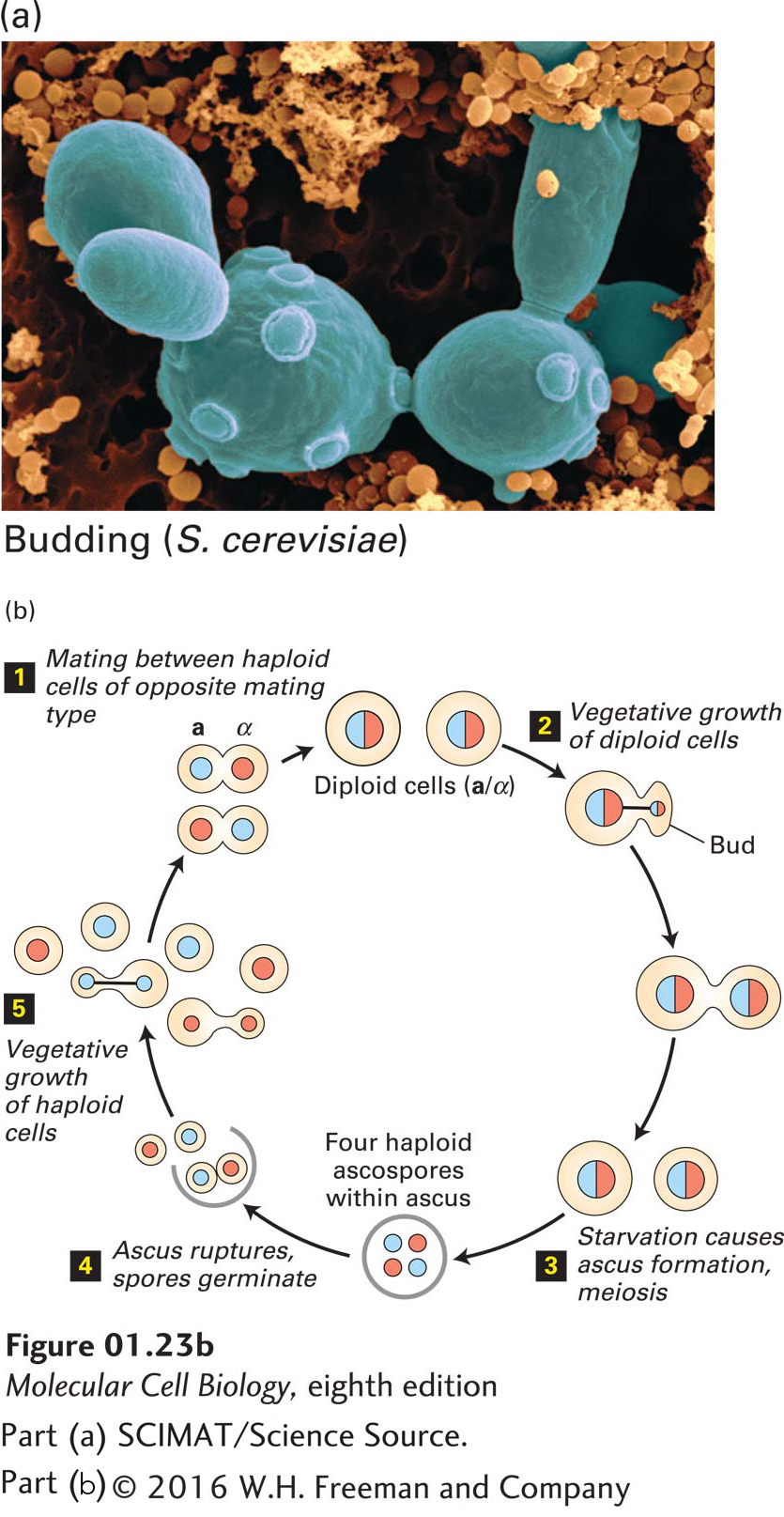
FIGURE 1- 23 The yeast Saccharomyces cerevisiae can be haploid or diploid and can reproduce sexually or asexually. (a) Scanning electron micrograph of the budding yeast Saccharomyces cerevisiae. These cells grow by an unusual type of mitosis termed mitotic budding. One daughter nucleus remains in the “mother” cell; the other daughter nucleus is transported into the bud, which grows in size and soon is released as a new cell. After each bud cell breaks free, a scar is left at the budding site, so the number of previous buds on the parent cell can be counted. The orange- colored cells are bacteria. (b) Haploid yeast cells can have different mating types, called a (blue) and α (orange). Both types contain a single copy of each yeast chromosome, half the usual number, and grow by mitotic budding. Two haploid cells that differ in mating type, one a and one α, can fuse together to form an a/α diploid cell that contains two copies of each chromosome; diploid cells can multiply by mitotic budding. Under starvation conditions, a diploid cell can undergo meiosis, a special type of cell division, to form four haploid ascospores. Rupture of an ascus releases four haploid spores, which can germinate into haploid a and α cells. These cells can also multiply asexually.
[Part (a) SCIMAT/Science Source.]
[Leave] [Close]